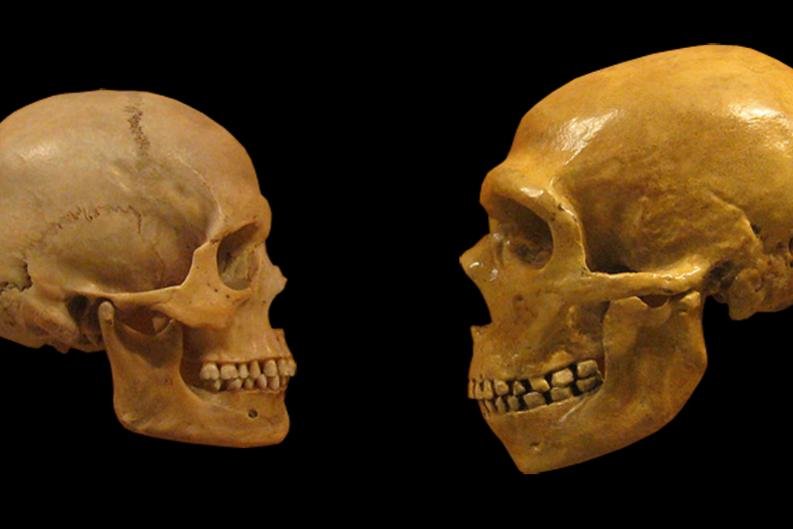By Brooks Hays

Several hundred thousands years before humans and Neanderthals interbred, another pair of hominin populations interbred -- the earliest instance of hominin interbreeding yet discovered. Photo by Wikimedia Commons
Feb. 21 (UPI) -- According to a new study, hominin populations were interbreeding at least 700,000 years ago. The revelation was made possible by statistical models and sophisticated genetic analysis methods developed by researchers at the University of Utah.
In 2017, anthropologist Alan Rogers claimed to have found genetic evidence of an early separation of Neanderthal and Denisovan lineages and a population bottleneck among their ancestors.
When anthropologists Fabrizio Mafessoni and Kay Prüfer analyzed the same DNA data, they arrived at a different interpretation. Rogers agreed that his original analysis was flawed.
"Both of our methods under discussion were missing something, but what?" Rogers asked in a news release.
Rogers returned to the data in search of patterns of mutations or shared genes that he missed the first time. His efforts revealed an interbreeding event.
According to the newest analysis, published this week in the journal Science Advances, the Neanderthal-Denisovan ancestor interbred with a separate hominin group, dubbed super-archaics, some 700,000 years ago.
"We've never known about this episode of interbreeding and we've never been able to estimate the size of the super-archaic population," said Rogers, lead author of the new study. "We're just shedding light on an interval on human evolutionary history that was previously completely dark."
By studying patterns of shared genes among modern Africans and Europeans, as well as ancient Neanderthals and Denisovans, Rogers and his research partners realized there were five instances of interbreeding over the course of hominin evolution, one of which was previously unknown.
The most famous instances of interbreeding, between modern Eurasians and Neanderthal and Denisovan predecessors, occurred 50,000 years ago. When they began interbreeding, the lineages of modern humans and those of Neanderthals and Denisovans were separated by 750,000 years.
Prior to the newly discovered interbreeding event, the lineages of super-archaics and Neanderthal-Denisovan ancestors were separated by more than a million years.
"These findings about the timing at which interbreeding happened in the human lineage is telling something about how long it takes for reproductive isolation to evolve," said Rogers.
According to the new analysis, super-archaics first emerged as a distinct species 2 million years ago. This early group migrated into Eurasia and expanded to boast a population size of between 20,000 and 50,000 individuals. Around 700,000 years ago, Neanderthal-Denisovan ancestors arrived in Eurasia. The two groups interbred shortly afterwards.
Until now, this period of early human evolution was unknown.
"I've been working for the last couple of years on this different way of analyzing genetic data to find out about history," said Rogers. "It's just gratifying that you come up with a different way of looking at the data and you end up discovering things that people haven't been able to see with other methods."
RELATED New branches of the Denisovan family tree discovered in Indonesia
No comments:
Post a Comment